Summary
Exploring the Mysterious Origins
The Cart Ruts of Malta present an archaeological enigma nestled in the island’s rocky landscape. These perplexing tracks cut deep grooves into the limestone, drawing visitors with their ancient mystery. Archaeologists and historians alike speculate on their purpose, with theories suggesting transportation uses or agricultural significance. Their true origin remains unknown, evoking awe and curiosity. The phenomenon spans various locations, with the most prominent at Clapham Junction, named after a busy railway station in London due to its intricate network of ruts. Visitors can explore freely, tracing the grooves that have perplexed minds for ages.
Get your dose of History via Email
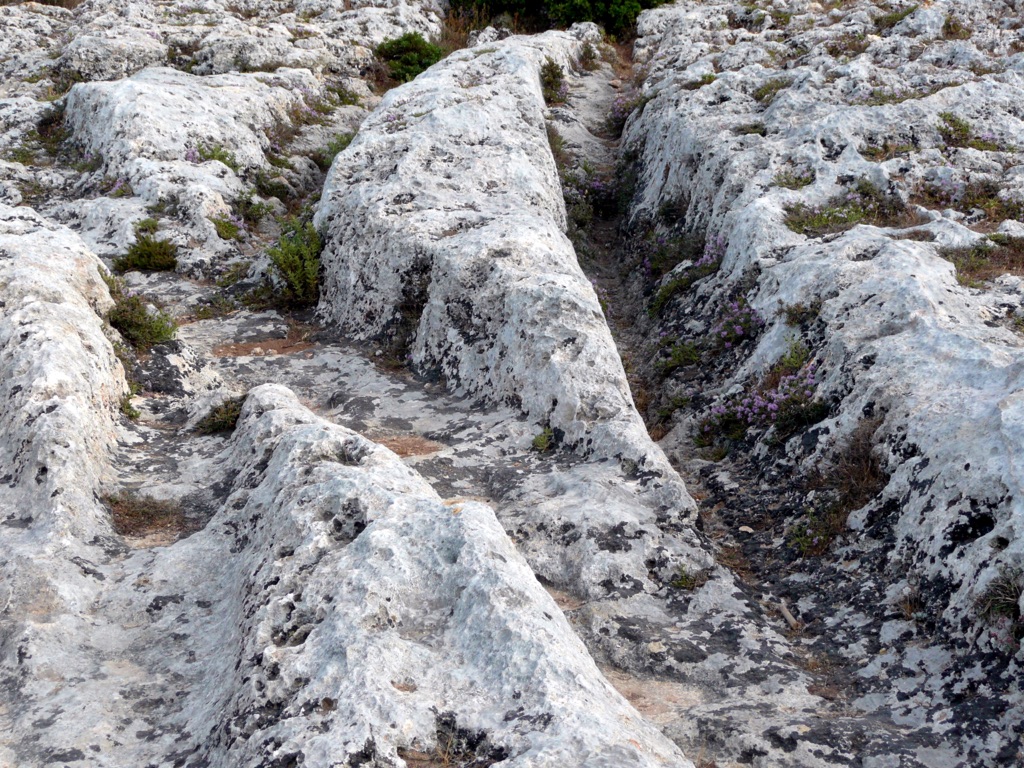
Architectural Marvels and Theories
Studying the Cart Ruts offers insights into Malta’s prehistoric era. The patterns suggest advanced understanding of construction and movement. Despite erosion, the ruts retain remarkable clarity. The depth varies, with some so profound they suggest repeated use over extended periods. Theories abound, from use by wheeled carts to guiding wooden sledges. Others suggest a system for controlling water flow or even links to ancient star maps. The robust debate reflects the ruts’ importance in understanding Malta’s cultural heritage. Each visit provides a moment to think back to times long gone and ponder the lives of those who carved these fascinating grooves into the earth.
Conservation Efforts and Visitor Impressions
Preserving the Cart Ruts is crucial for Malta’s archaeological heritage. Conservation efforts focus on protection against natural decay and human-induced damage. Walking paths allow controlled access, helping to minimize wear on the soft limestone. Informational signs share theories about the ruts’ purpose, enhancing visitor experience. Travelers often leave with a sense of connection to Malta’s distant past. These mysterious tracks continue to intrigue and inspire discussions. They remind us of human ingenuity and the enduring nature of history’s puzzles.
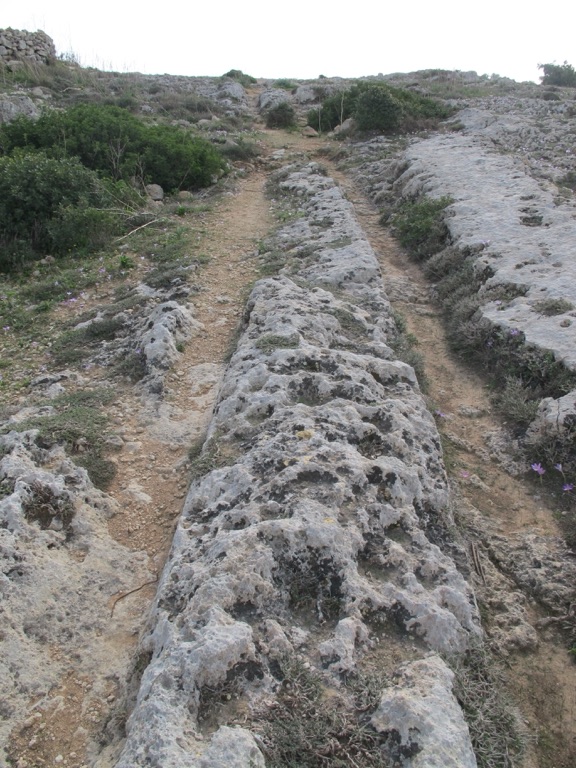
Historical Background of The Cart Ruts of Malta
A Glimpse Into the Past
Scattered across the Maltese archipelago, the Cart Ruts are ancient tracks engraved into the limestone. They offer a glimpse into prehistory, hinting at Malta’s early inhabitants and their activities. While their precise age is uncertain, some evidence points to their creation around 2000 to 1000 BC. This timeline places them in the Bronze Age, a period of early human development when metal tools became prevalent. The Cart Ruts are thus invaluable in piecing together Malta’s prehistoric puzzle. They stand as a testament to the archipelago’s rich history and the enterprising nature of its earliest settlers.
The Purpose of the Ruts
The function of these enigmatic tracks continues to puzzle experts. Some suggest they served as routes for transporting goods and materials. Others believe they may have had a ritualistic or religious significance. The wear patterns hint at heavy, frequent use, perhaps by carts or animals. Interestingly, the ruts often lead to now-vanished sites, indicating possible links to old temples or settlements. Analysis of the ruts’ directions also reveals a possible orientation towards resources like water or farming land. Their true purpose might never be fully understood, but the variety of theories adds to their mystique and allure.
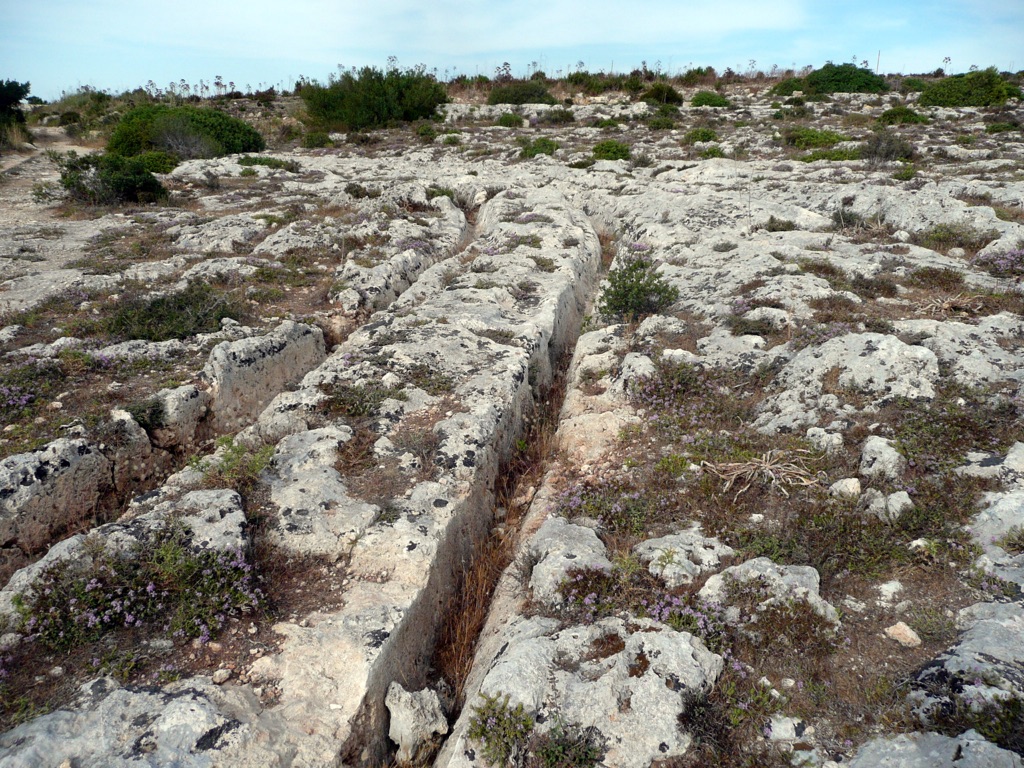
Study and Preservation
Recognizing the Cart Ruts’ historical value, scholars and archaeologists have worked to study and preserve them. The Maltese government has also taken steps to protect these features through legislation. Tourist paths and viewing platforms help maintain the ruts’ integrity. Scientific studies focus on dating the tracks and assessing weathering impacts. The ongoing preservation efforts ensure future generations can appreciate this link to Malta’s prehistory. The Cart Ruts not only hold allure for history buffs but also present a tangible connection to the distant past, nestled into Malta’s beautiful landscapes.
The distinctive patterns of the Cart Ruts suggest sophisticated knowledge of terrain and stone. The level precision in the tracks attests to the skills of their creators. Archaeologists remain in awe of the way this ancient network fits within Malta’s rocky terrain. The Cart Ruts accentuate the landscapes, guiding visitors through scenic routes and captivating viewpoints. Often found in clusters, the tracks reveal a level of social organization indicative of an advanced community. As tools of exploration or commerce, they echo the voices of Malta’s ancestors through the ages.
Today, the Cart Ruts are a unique tourist attraction, drawing curious minds from around the world. They offer an open-air museum experience, engaging visitors with hands-on exploration. The allure of unlocking an ancient secret is a powerful draw. Seasoned guides and interpretive signs enrich the experience, providing insight into the ruts’ history. Whether serving as silent custodians of Malta’s past or as captivating features of the landscape, the Cart Ruts hold a special place in the island’s narrative. They challenge us to look back and appreciate the complexities of history’s unfoldment.
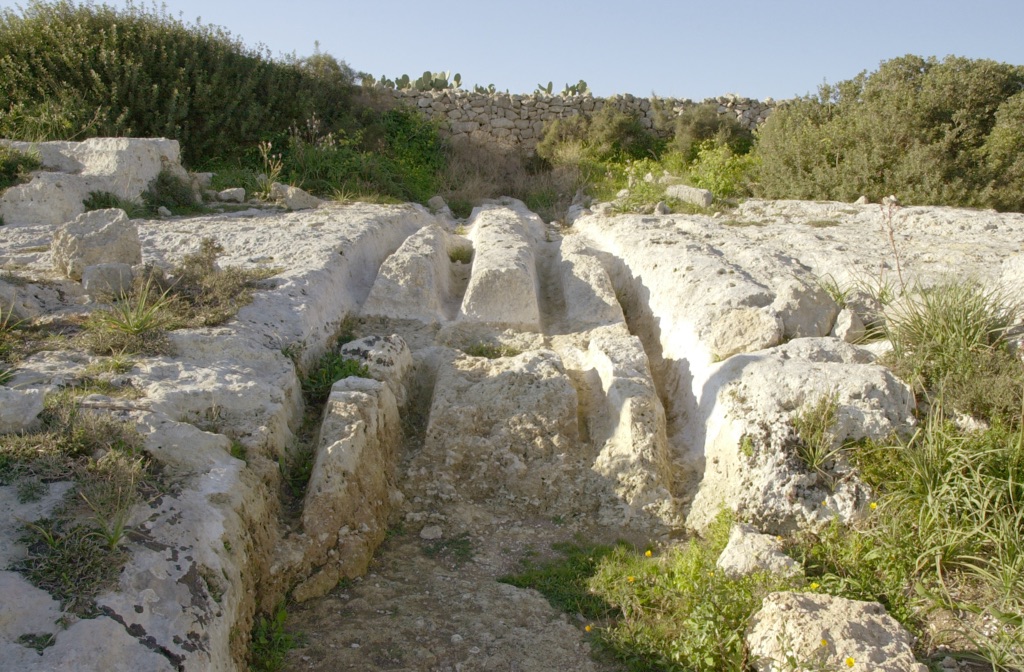
The Discovery of The Cart Ruts of Malta
Unearthing the Mysterious Tracks
The Cart Ruts of Malta caught historians’ eyes in the late 20th century. Though local farmers had long known of their existence, it wasn’t until researchers took interest that their significance was recognized. Initial documentation efforts began in earnest, as these enigmatic tracks were more widespread than previously thought. It became clear that these grooves were not isolated instances but part of a complex network strewn across the islands. Consequently, this discovery sparked a wave of interest from historians and archaeologists alike, aiming to unlock their secrets.
The First Investigations
Initial examinations indicated that the ruts were not natural formations but man-made creations. Early researchers, such as archaeologist David H. Trump, took a particular interest in their systematic patterns. By comparing the ruts to similar phenomena elsewhere, they developed theories about their function. These investigations placed the ruts as a significant historical artefact. They suggested a degree of sophistication and planning in ancient Maltese society that had not been previously documented.
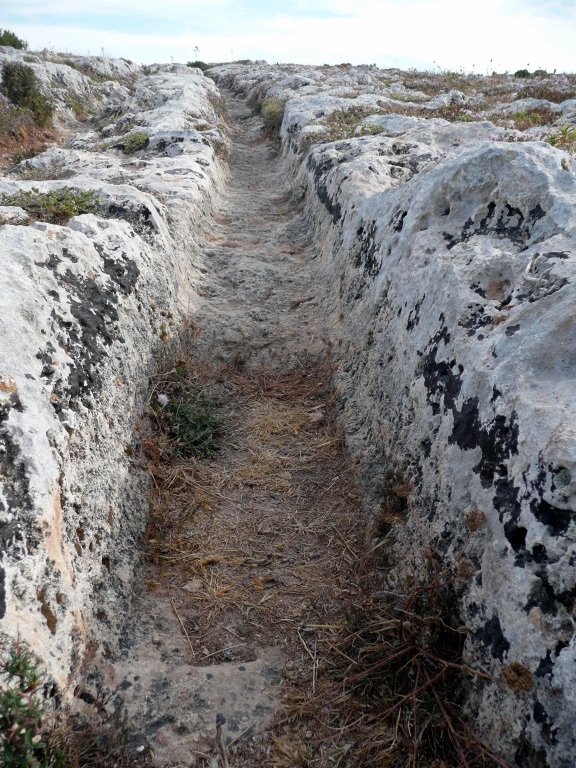
Expanding the Historical Context
Further studies broadened our understanding of the Cart Ruts. They were soon considered in the context of Malta’s other prehistoric structures, like the famous megalithic temples. The dates suggested that the ruts could align with these ancient monuments, possibly offering clues about their transportation or trade practices. This context sparked new theories about the island’s history and the civilization that once thrived there. As a result, the Cart Ruts became integral to the narrative of Malta’s ancient past.
The Cart Ruts have since been the subject of many scholarly articles and documentaries. As Malta’s tourism industry evolved, so did the interest in these historical tracks. Visitors from around the globe come to Malta to see the ruts firsthand. Their popularity has led to improved conservation efforts and the establishment of visitor centers. These developments further solidify the Cart Ruts as an essential element in Malta’s cultural and historical landscape.
Today, Malta celebrates the Cart Ruts as part of its national heritage. Educational programs and guided tours help bring their story to life for visitors of all ages. While much about the Cart Ruts remains a mystery, their discovery has undoubtedly enriched the understanding of Malta’s prehistory. It continues to invite exploration and scholarly inquiry, ensuring that the tale of the Cart Ruts will fascinate for generations to come.
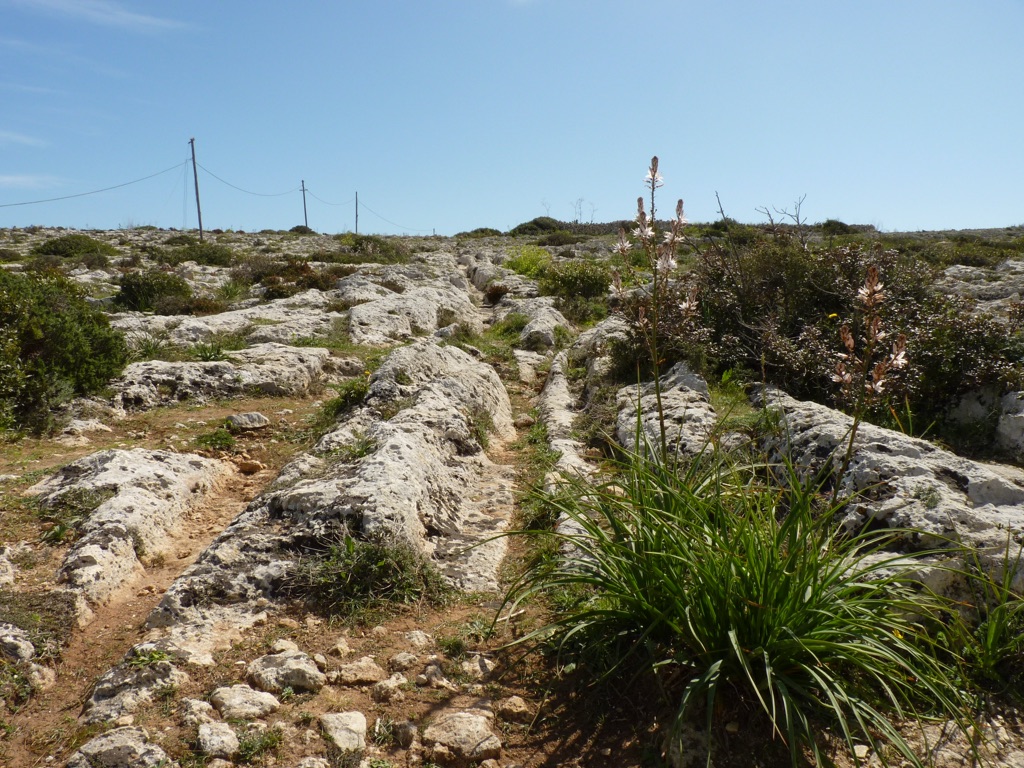
Cultural Significance, Dating methods, Theories and Interpretations
The Cultural Impact of Malta’s Ancient Pathways
The Cart Ruts of Malta are more than just historical curiosities; they are emblematic of the island’s intricate past. As silent narrators of a bygone era, the ruts are a cultural bridge to Malta’s ancient civilizations. They offer insights into the daily lives of prehistoric communities, their transportation methods, and potentially even their trade routes. These enigmatic tracks are now a source of national pride, incorporated into Malta’s educational curricula and celebrated in cultural exhibitions, effectively grounding contemporary Maltese identity in its rich archaeological heritage.
Deciphering the Age of the Cart Ruts
Establishing an accurate timeline for the creation of the Cart Ruts has been challenging. Dating methods like stratigraphy have provided some clues, examining the layers of earth that have built up over the ruts. In some cases, pottery shards and other artifacts found within the same stratigraphic layer have allowed researchers to estimate their age, placing them within the Bronze Age. However, without organic material for radiocarbon dating, precise dating remains elusive, with estimates sometimes spanning several millennia.
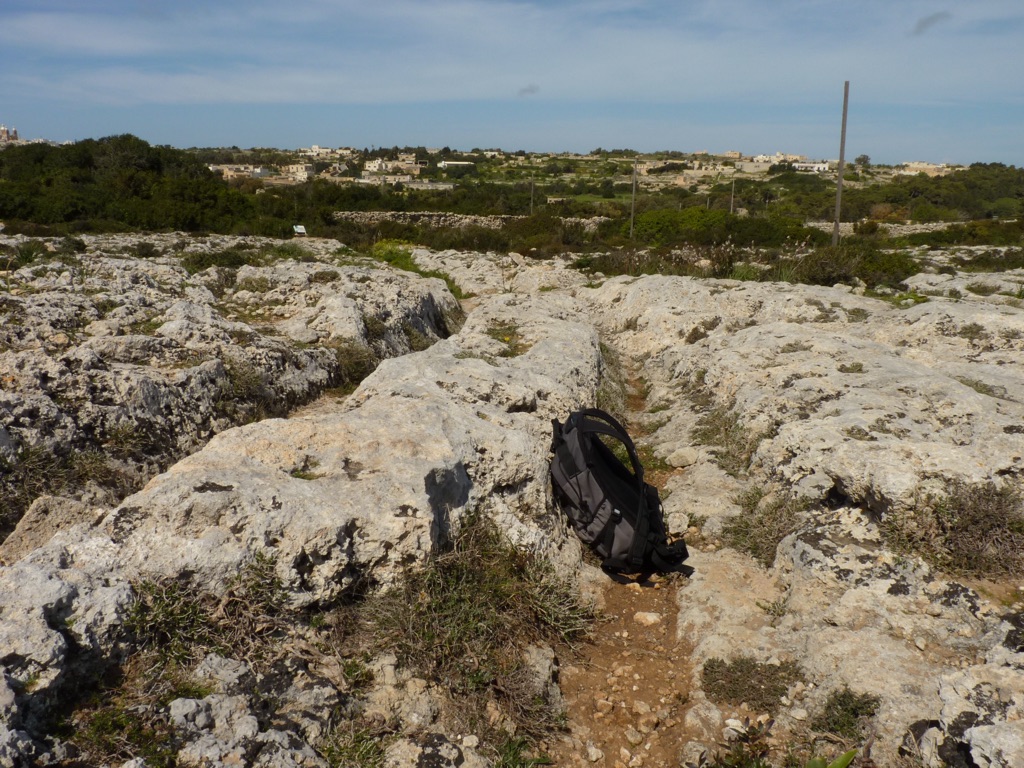
Illuminating Theories and Interpretations
Theories about the Cart Ruts abound. Some researchers propose they served agricultural purposes, perhaps as an ancient irrigation network or as part of farming practices. Others argue for a transportation role, envisioning carts carrying materials to and from construction sites, including Malta’s famed temples. An intriguing interpretation even suggests astronomical alignments, aligning the tracks with stars and solstices. These interpretations strive to piece together the ruts’ enigmatic functions, each offering a compelling narrative in the story of early Maltese history.
Despite multiple studies, the Cart Ruts evade a definitive explanation. This ongoing mystery only amplifies their historical allure, inviting both academic and public speculation. It’s possible that with time and advances in archaeological methods, clearer answers may emerge. Until then, the ruts remain an open-ended chapter in Malta’s historical saga, one that continues to captivate and inspire exploration into the island’s storied past.
While scholars debate their origins, the Cart Ruts have undeniably shaped Malta’s cultural landscape. They draw tourists, academics, and locals alike, all seeking to understand or merely marvel at these ancient grooves. Their continued study offers potential breakthroughs in understanding prehistoric Maltese society, and their preservation ensures that this enigmatic heritage endures as a point of cultural reflection and academic pursuit, cementing the Cart Ruts’ esteemed place in Malta’s historical narrative.
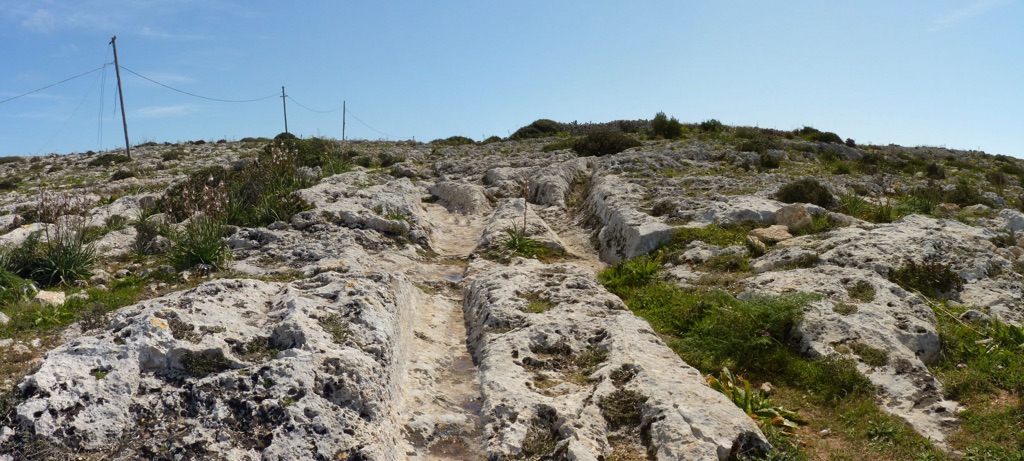
Conclusion and Sources
The Cart Ruts of Malta present a captivating mystery that invites both wonder and scholarly inquiry. They are significant not only as archaeological artifacts but as cultural symbols of Malta’s ancient heritage. Despite extensive research, their origins and purposes continue to provoke debate among historians, archaeologists, and tourists alike. As guardians of history, the Cart Ruts challenge us to consider the complexities of the past and the capabilities of early civilizations. While concrete answers may yet elude us, the fascination surrounding these historical grooves ensures they remain a treasure of the Maltese landscape and a pivotal subject for continued exploration and preservation.
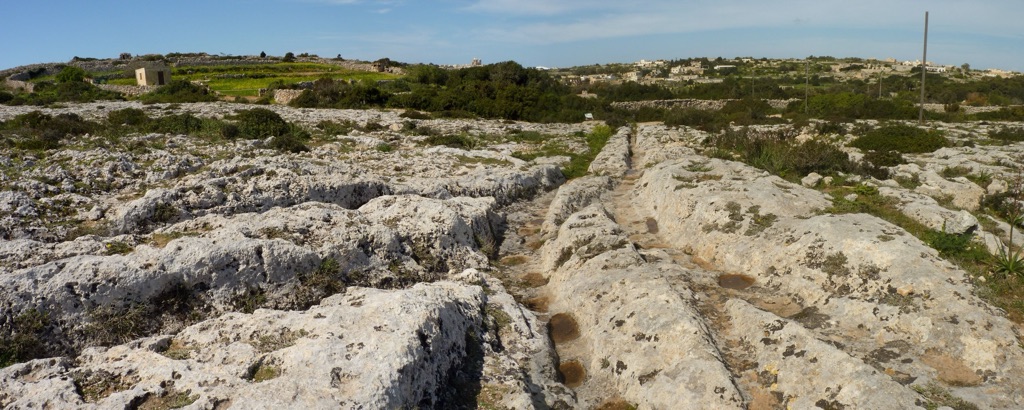
For further reading and to validate the information presented in this article, the following sources are recommended:
Or you can check any of these reputable archaeological and historical texts:
Trump, D.H., Malta: Prehistory and Temples (Midsea Books, 2002).
Bonanno, A., Malta: Phoenician, Punic, and Roman (Midsea Books, 2005).
Mifsud, A. et al., Malta Before History (Miranda Publishers, 2004).
Sagona, C., The Archaeology of Malta (Cambridge University Press, 2015).
Ventura, F., The Cart Ruts and their Impact on the Maltese Landscape (Heritage Malta, 2010).

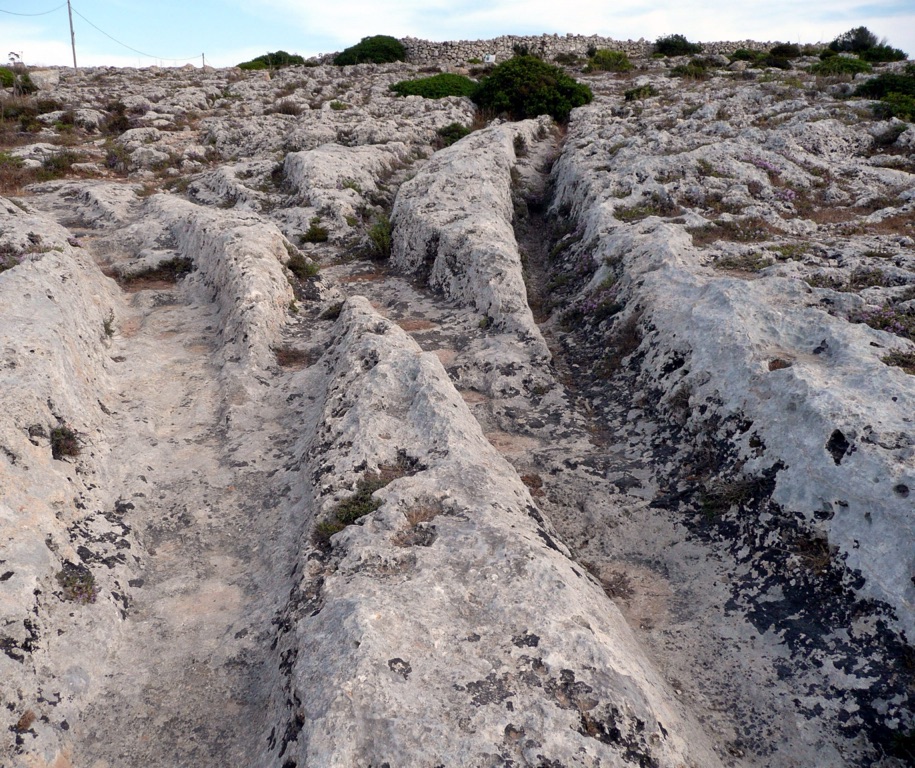
It would greatly enhance my experience if there was a drone view from above of the ruts in an expansive sweep so I could see the entirety for a better perspective.